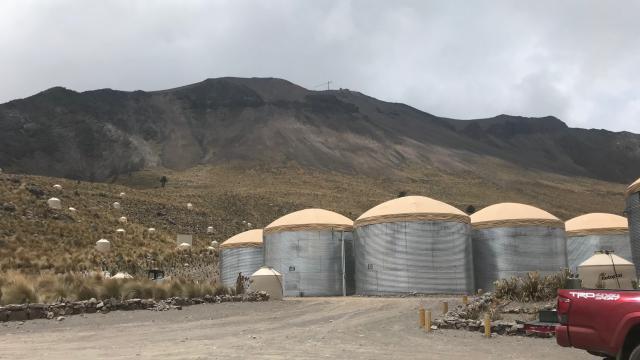New measurements from an experiment near the top of an extinct Mexican volcano have placed a stringent new limit on whether light can exceed the universe’s well-known top speed.
Physicists have crafted theories that do a good job explaining much of the universe”but these theories fail when it comes to many of the extremes, such as how matter interacts on the surface of a black hole or right after the Big Bang. Testing the limits of Albert Einstein’s theories in order to develop a broader theory to incorporate these extremes has become an entire field of physics. But with every test, modern physics theories fail to bend. A new experiment was perhaps their most extreme challenge yet.
“My gut reaction was, I’m astounded,” Pat Harding, one of the study authors and an astrophysicist at Los Alamos National Laboratory told Gizmodo. This new research extends the reach of Einstein’s famous theories to energies impossible to directly access on Earth or in space.
[referenced url=” thumb=” title=” excerpt=”]
Some physicists have tried to explain the universe’s mysteries with ideas (string theory, for example) that produce small deviations from the well-established theories. These deviations only appear for extreme cases, like ultra-high-energy particles. Physicists were looking for such a deviation here, to see if the universe violates a well-established feature called Lorentz invariance for energetic-enough photons. Lorentz invariance says that the laws of physics are the same for everyone who is stationary (regardless of their orientation in space) or in constant motion (with a mathematical formula to convert between the stationary and moving frames). A consequence of this symmetry is a constant value of the speed of a light particle in a vacuum, which is slightly under 300 million meters per second.
A violation of this Lorentz invariance could cause extremely high-energy light to travel faster or slower than this top speed, and such violations could have observable impacts. These particles would also decay or split up and fail to reach Earth. This would appear as a drop-off in the number of photons hitting an experiment at high-enough energies. So physicists at the High-Altitude Water Cherenkov (HAWC) observatory in Mexico went searching for the signature.
HAWC consists of hundreds of large water tanks sitting near the top the Sierra Negra volcano in Mexico. You can learn more about HAWC from our visit there, but basically, high-energy particles interact with the atmosphere, creating a shower of particles that cause small flashes when they interact with the water. Photomultiplier tubes turn these flashes into a signal, and scientists can reconstruct what particle caused the flashes based on which vats they produced a signal in.
Combined with better methods to calculate the energy of incoming photons, the data was clear: There was no drop-off. HAWC continued to see photons from astrophysical sources with energies as high as 285 TeV, over 40 times higher than one particle beam of the Large Hadron Collider, the most powerful particle physics experiment on Earth. The presence of these gamma rays rules out faster-than-light travel for these highest-energy photons. And, according to physicist Humberto MartÃnez-Huerta at the University of São Paulo, through mathematical work, this also increases the minimum possible energy scale at which such a Lorentz invariance-violating theory can exist by a hundred times.
Basically, even mindbogglingly energetic light particles still travel at the speed of light, which we know because an experiment on Earth can measure them. This observation constrains what kinds of extensions physicists can tack onto their present-day theories when trying to solve their outstanding problems, according to the paper published in Physical Review Letters.
But the observation doesn’t constrain every kind of extension to Einstein’s theories, MartÃnez-Huerta explained. Perhaps violations to Lorentz invariance can appear in other particles, or perhaps they might cause some photons to travel slower than the speed of light.
One physicist not involved in the study, Ralf Lehnert at Indiana University, told Gizmodo that the work was solid. He reiterated that this is just one way to measure Lorentz invariance violations. But, he said, this study adds to dozens upon dozens of other tests seeking evidence of such violations, none of which have yet found any.
Scientists plan on extending the search, as HAWC’s scientists add more vats of water and increase the experiment’s sensitivity. But once again, Einstein’s theory of relativity refuses to budge, even for the most extreme of cases.
